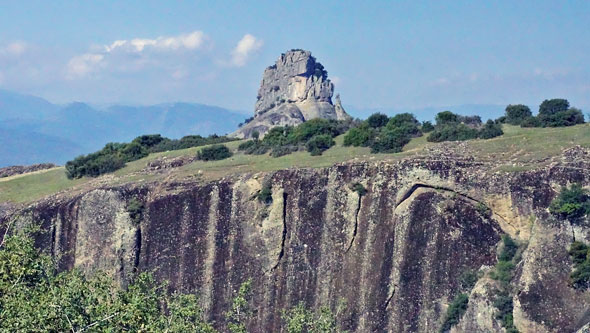|
|
|
| |
Greece & the Greek Islands - 13th-27th September 2016
Page 11:-
Volos - Meteora Monasteries - 25th September 2016
All images link to larger
copies which will open in a new window/tab
|
|
|
This page is one of a series on an Aegean Odyssey
cruise in the Greek Islands. From Volos we took an excursion the
the amazing scenery and monasteries of Meteora. The rock
formations were wonderful but the monasteries themselves were
not particularly interesting. The monasteries were built in the
14th-16th Centuries at the top of the tall sandstone rock
formations to protect themselves from Turkish raiders. They were
accessible only by long rope ladders or nets which were winched
up on long ropes. It was not until the 1920s that long flights
of steps were built easier access. At least two of the
monasteries, Holy Trinity and Varlaam have very basic cable-car
connections to nearby peaks with road access. These of not open
to the public.
We did not have any time to visit Volos itself.
|
|
|
|
|
|
Volos - Meteora Monasteries - 25th September 2016
All images link to larger
copies which will open in a new window/tab
The Athens Metro
Athens Metro - Syntagma Station
with archaeological items displayed
Photo: ©Ian Boyle 25th September 2016


The Metéora (Greek: Μετέωρα], literally 'middle of
the sky', 'suspended in the air' or 'in the heavens above' - etymologically
related to meteorology) - is a formation of immense monolithic pillars and
hills like huge rounded boulders which dominate the local area. It is also
associated with one of the largest and most precipitously built complexes of
Eastern Orthodox monasteries in Greece, second in importance only to Mount
Athos. The six monasteries are built on natural sandstone rock pillars, at
the north-western edge of the Plain of Thessaly near the Pineios river and
Pindus Mountains, in central Greece. We visited two Monasteries, St Stephen
and Varlaam, and photographed two others, Holy Trinity and Great Meteoron.
Metéora is included on the UNESCO World Heritage List under criteria I, II,
IV, V and VII. The nearest town is Kalambaka.
ref:
Wikipedia
The Monastery of St. Stephen has a small church built in the 16th century
and decorated in 1545. This monastery rests on the plain rather than on a
cliff. It was shelled by the Nazis during World War II who believed it was
harbouring insurgents and was abandoned. The monastery was given over to
nuns in 1961 and they have reconstructed it into a flourishing nunnery, with
28 nuns in residence in 2015.
Old postcards of the Monastery
of St Stephen
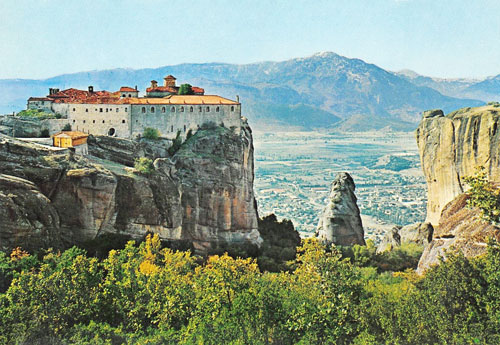
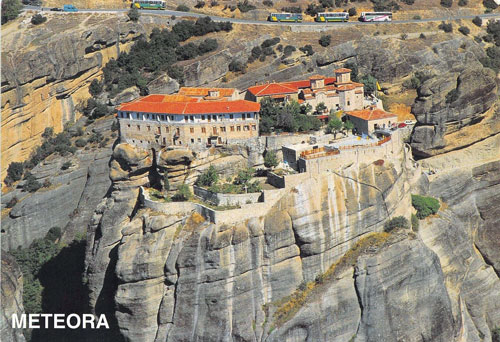
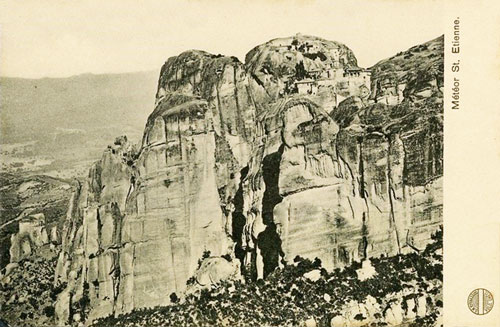 Views of the Monastery of St
Stephen
Views of the Monastery of St
Stephen
Photos: ©Ian Boyle 25th September 2016


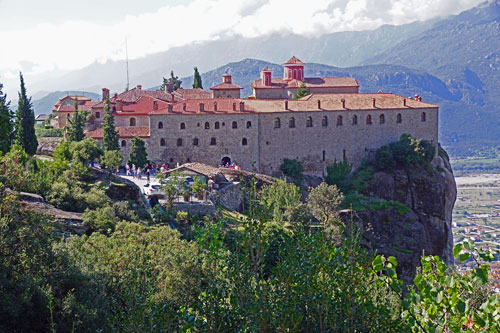
 Images of the Monastery of St
Stephen
Images of the Monastery of St
Stephen
Photos: ©Ian Boyle 25th September 2016
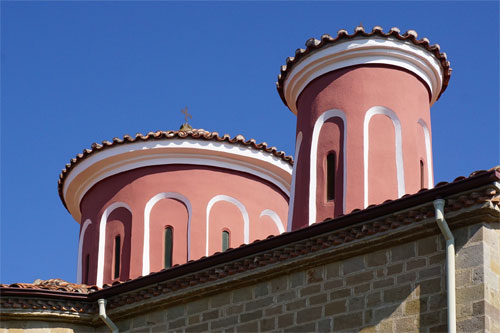
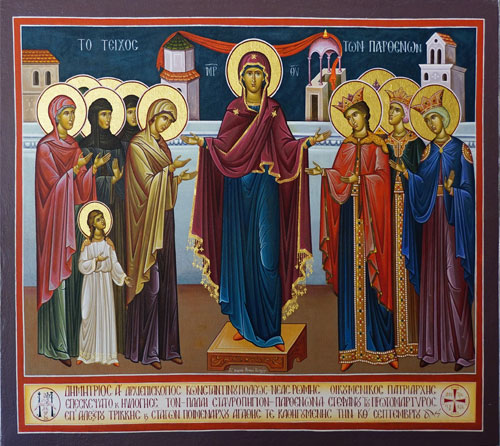
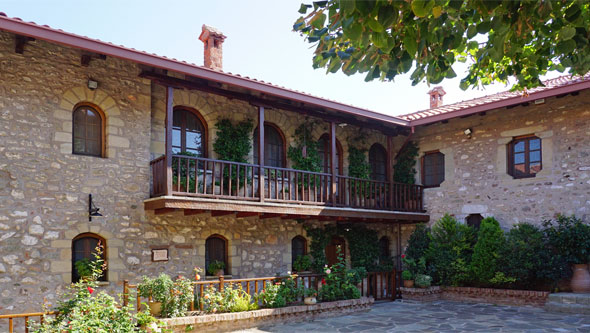

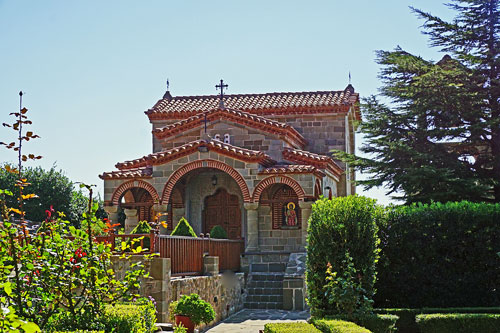

 Views from the Monastery of St
Stephen
Views from the Monastery of St
Stephen
Photos: ©Ian Boyle 25th September 2016
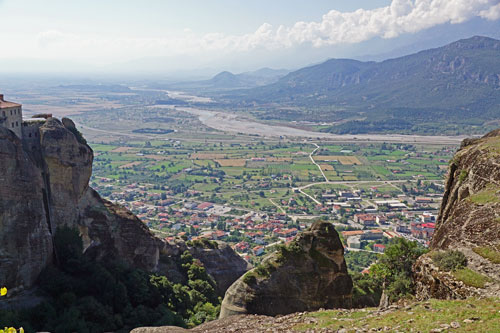
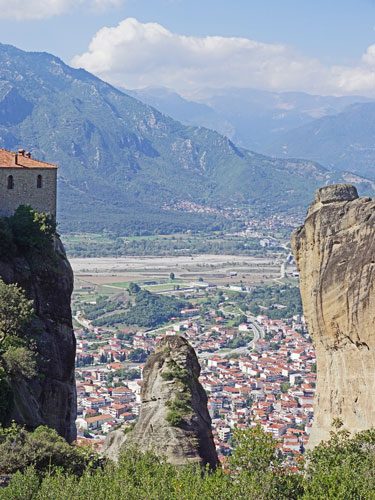
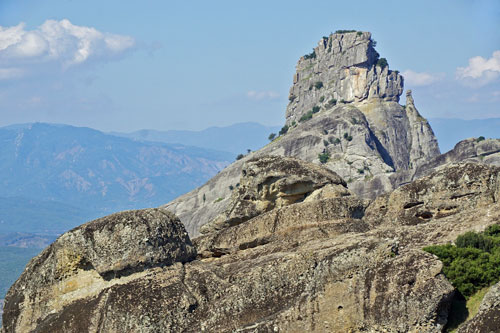
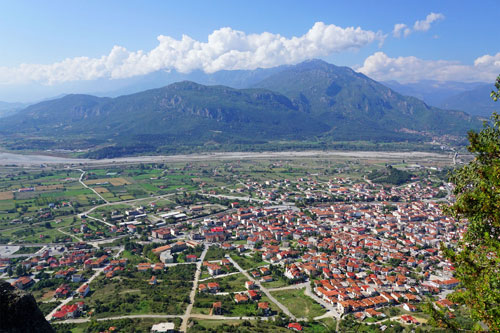

Monastery of Great Meteoron
The Monastery of Great Meteoron is the largest of the monasteries located at
Metéora, though in 2015 there were only 3 monks in residence. It was erected
in the mid-14th century and was the subject of restoration and embellishment
projects in 1483 and 1552. One building serves as the main museum for
tourists. The Katholikon (main church), consecrated in honour of the
Transfiguration of Jesus was erected in the middle of the 14th century and
1387/88 and decorated in 1483 and 1552. We did not visit this monastery but
did manage to photograph it from Varlaam.
Old postcards of the Monastery of
Great Meteoron

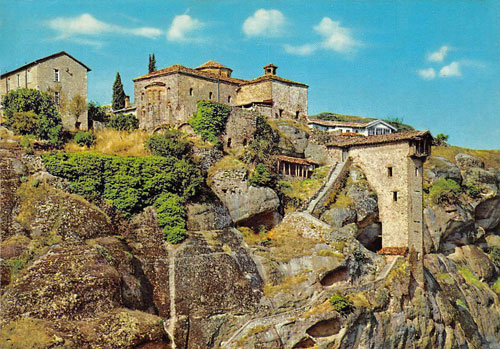

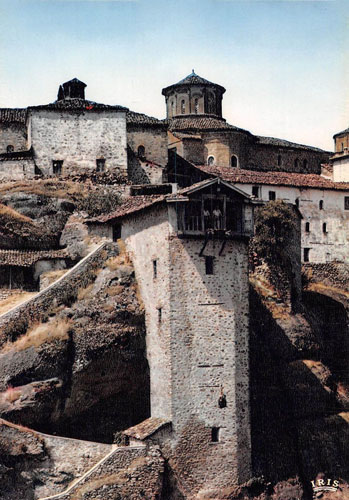

Images of the Monastery of
Great Meteoron
Photos: ©Ian Boyle 25th September 2016
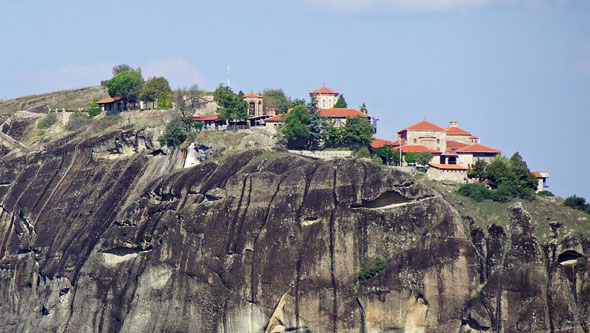


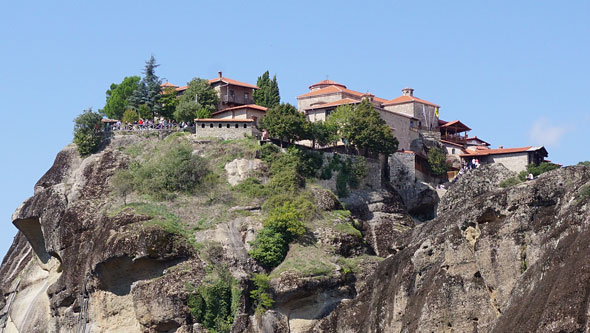

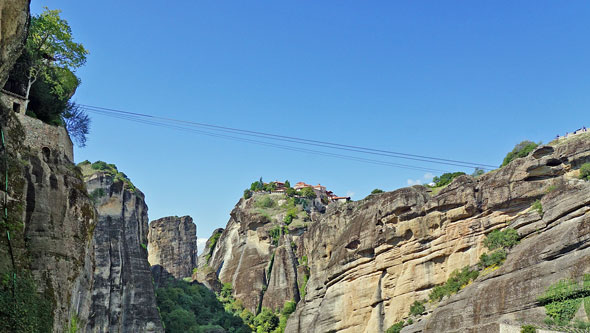
The Monastery of Varlaam – The Monastery of Varlaam is the second largest
monastery in the Metéora complex, and in 2015 had the largest number of
monks (seven) of the male monasteries. It was built in 1541 and embellished
in 1548. A church, dedicated to All Saints, is in the Athonite type
(cross-in-square with dome and choirs), with spacious exonarthex (lite) is
surrounded by a dome. It was built in 1541/42 and decorated in 1548, while
the exonarthex was decorated in 1566. The old refectory is used as a museum
while north of the church is the parekklesion of the Three Bishops, built in
1627 and decorated in 1637. This was the second monastery that we visited.
Images of the Monastery of
Varlaam
Photos: ©Ian Boyle 25th September 2016

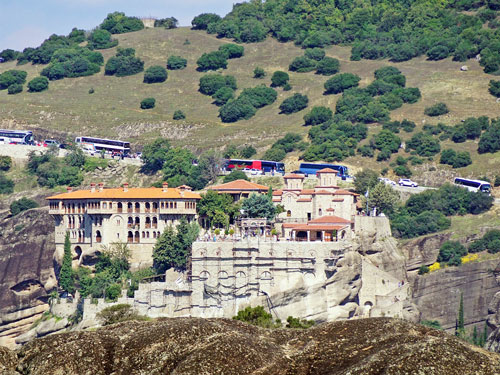
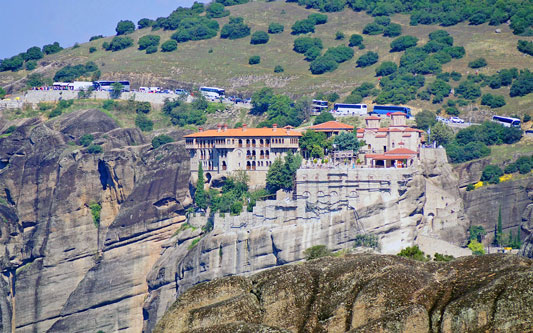 Images of the Monastery of
Varlaam.
Images of the Monastery of
Varlaam.
Photos: ©Ian Boyle 25th September 2016
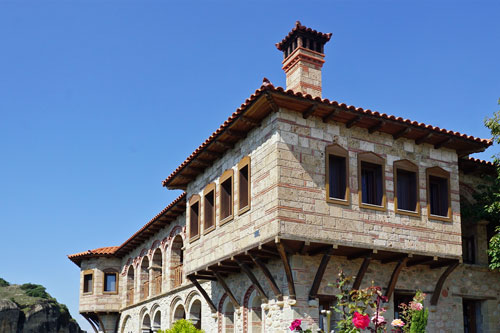
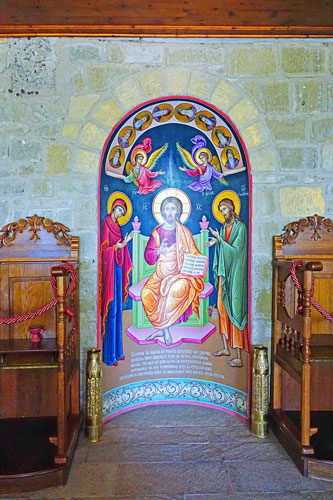 Images of the Monastery of
Varlaam winches and tower. Until the 1920s the only access to the
monasteries was by rope ladder or being winched up in a net. Steps were cut
into the rocks to gain access in the 1920s. The original rope winch still
exists but is now replaced with an electric winch and steel cable which
still used to lift supplies etc.
Images of the Monastery of
Varlaam winches and tower. Until the 1920s the only access to the
monasteries was by rope ladder or being winched up in a net. Steps were cut
into the rocks to gain access in the 1920s. The original rope winch still
exists but is now replaced with an electric winch and steel cable which
still used to lift supplies etc.
Photos: ©Ian Boyle 25th September 2016
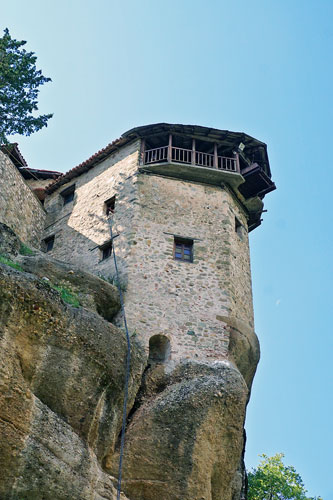
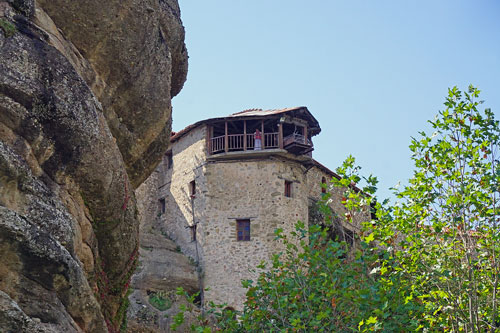
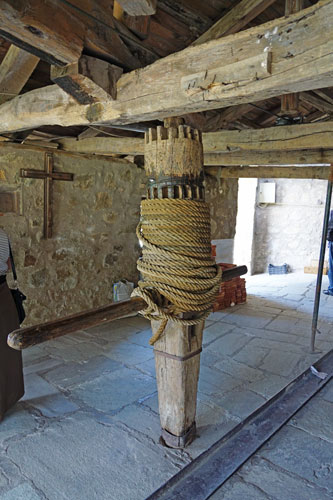
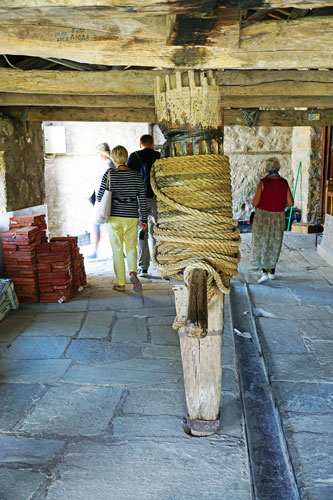

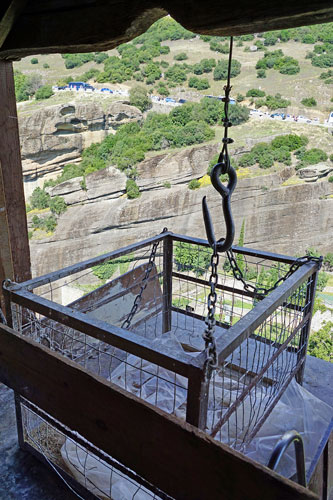

 Images of the Monastery of
Varlaam cable-car. Until the 1920s the only access to the monasteries was by
rope ladder or being winched up in a net. Steps were cut into the rocks to
gain access in the 1920s. More recently, small cable cars have been built to
link the monasteries with adjacent hills with road access.
Images of the Monastery of
Varlaam cable-car. Until the 1920s the only access to the monasteries was by
rope ladder or being winched up in a net. Steps were cut into the rocks to
gain access in the 1920s. More recently, small cable cars have been built to
link the monasteries with adjacent hills with road access.
Photos: ©Ian Boyle 25th September 2016

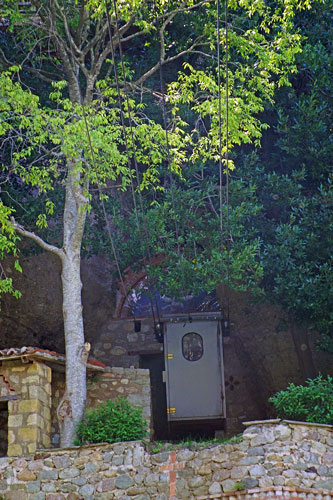
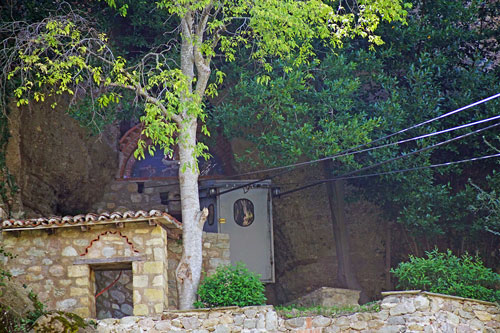
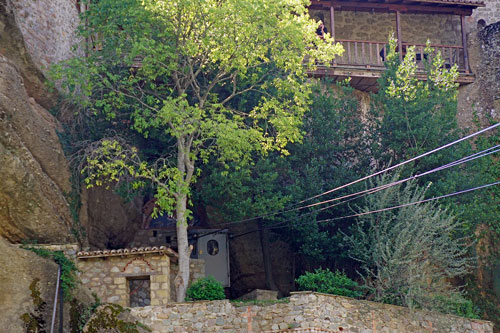


 Images of the Monasteries of
Varlaam (right) and Great Meteoron (left)
Images of the Monasteries of
Varlaam (right) and Great Meteoron (left)
Photos: ©Ian Boyle 25th September 2016

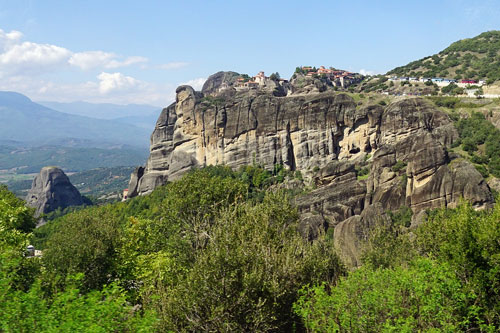
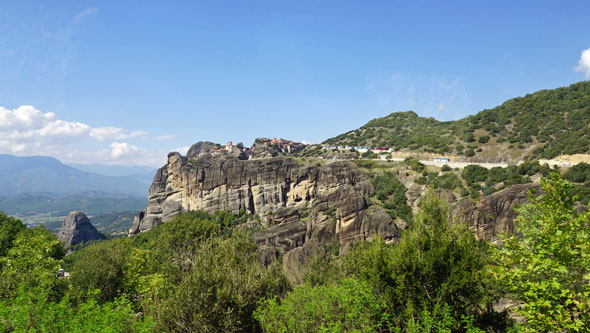
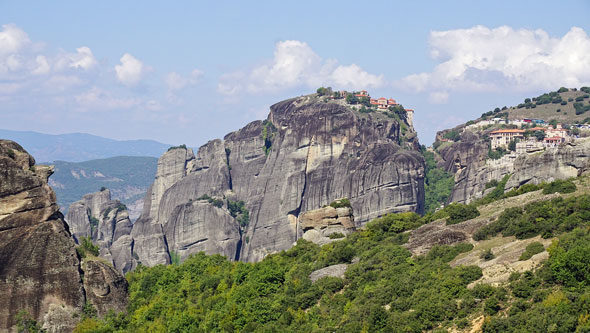
Monastery of the Holy Trinity
The Monastery of the Holy Trinity is on top of the cliffs. It was built in
1475 and was remodelled in 1684, 1689, 1692, 1741. There were four monks in
residence in 2015.
Images of the Monastery of the
Holy Trinity
Photos: ©Ian Boyle 25th September 2016

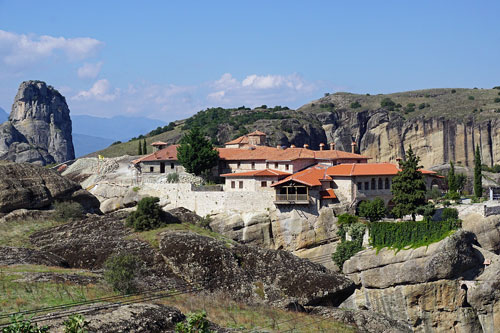
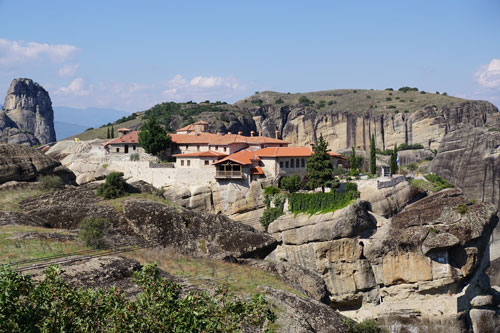
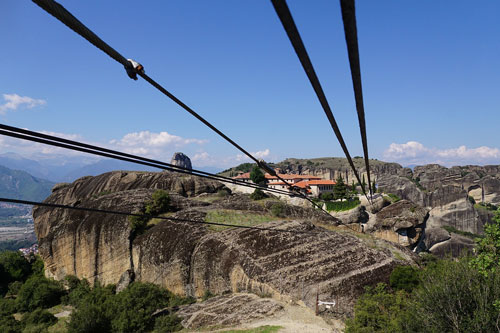
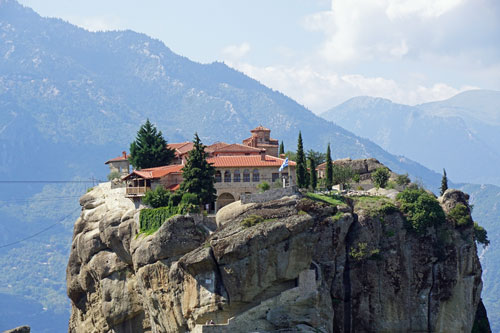

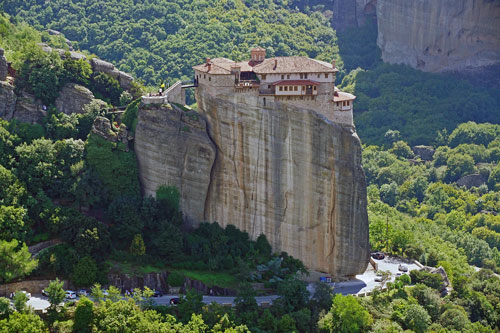

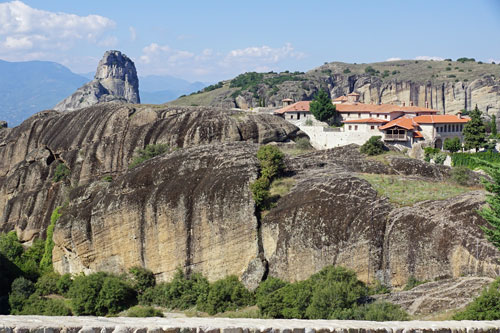 Cable car to the Monastery of
the Holy Trinity
Cable car to the Monastery of
the Holy Trinity
Photos: ©Ian Boyle 25th September 2016

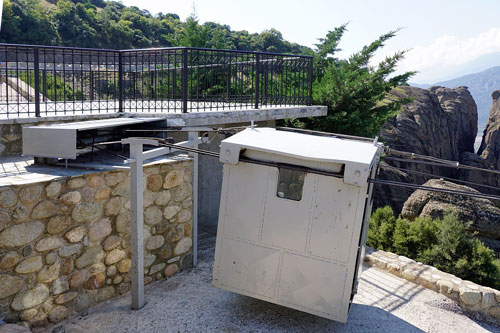

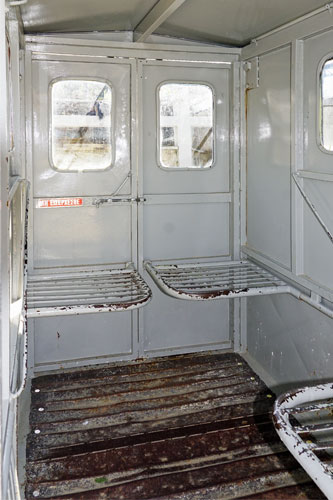
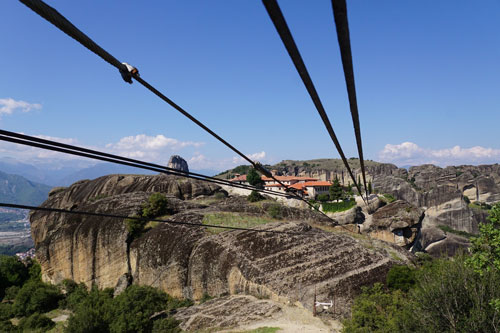
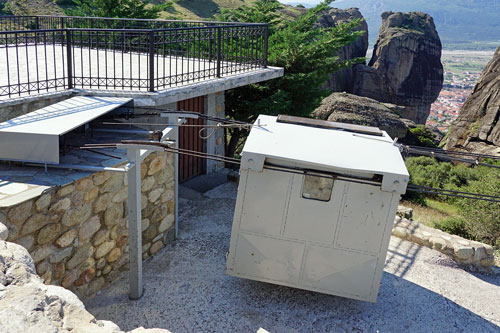

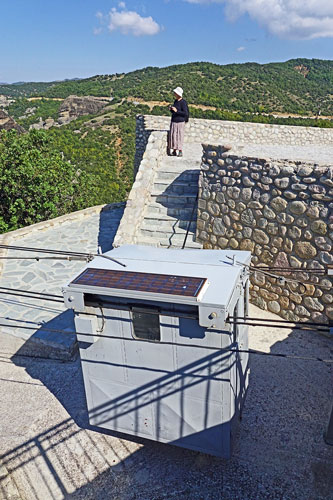
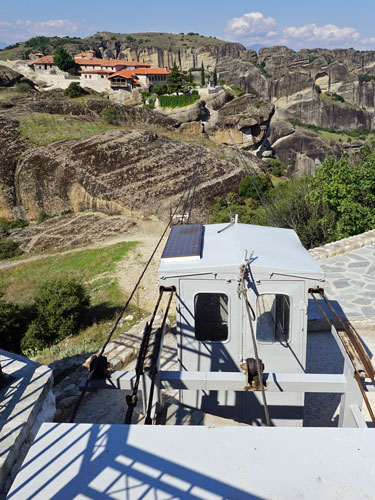
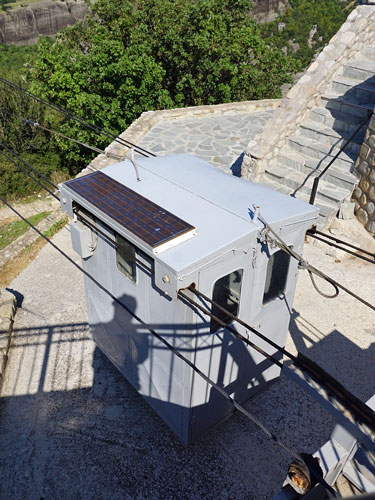
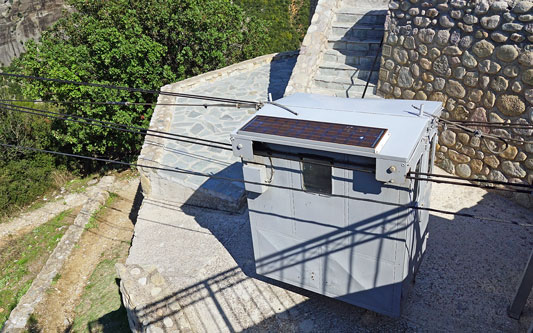
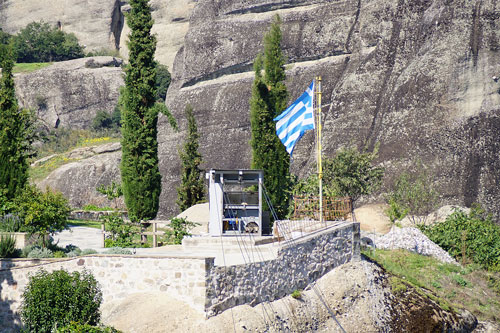
The Monastery of Varlaam – The Monastery of Varlaam is the second largest
monastery in the Metéora complex, and in 2015 had the largest number of
monks (seven) of the male monasteries. It was built in 1541 and embellished
in 1548. A church, dedicated to All Saints, is in the Athonite type
(cross-in-square with dome and choirs), with spacious exonarthex (lite) is
surrounded by a dome. It was built in 1541/42 and decorated in 1548, while
the exonarthex was decorated in 1566. The old refectory is used as a museum
while north of the church is the parekklesion of the Three Bishops, built in
1627 and decorated in 1637.
Meteora Rock Formations
Photos: ©Ian Boyle 25th September 2016

